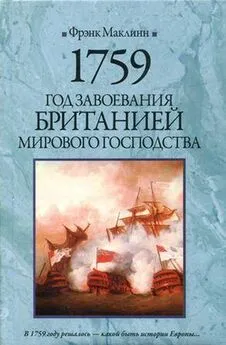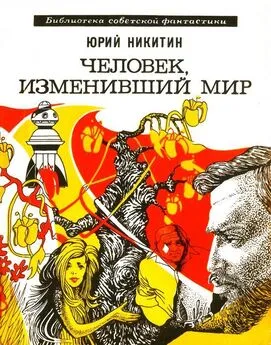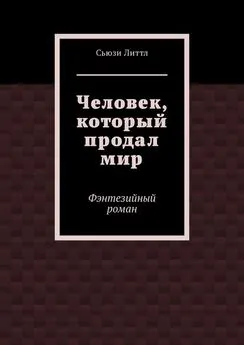Фрэнк Маклинн - Чингисхан. Человек, завоевавший мир
- Название:Чингисхан. Человек, завоевавший мир
- Автор:
- Жанр:
- Издательство:АСТ
- Год:2019
- Город:Москва
- ISBN:978-5-17-095186-4
- Рейтинг:
- Избранное:Добавить в избранное
-
Отзывы:
-
Ваша оценка:
Фрэнк Маклинн - Чингисхан. Человек, завоевавший мир краткое содержание
Чингисхан. Человек, завоевавший мир - читать онлайн бесплатно ознакомительный отрывок
Интервал:
Закладка:
1741
Самолюбие ( фр .).
1742
Chung to Genghis, April 1220, in Chavannes, 'Inscriptions,' loc. cit. p. 303.
1743
Waley, Travels of an Alchemist; Bretschneider, Mediaeval Researches I pp. 43–44.
1744
Chavannes, 'Inscriptions,' p. 305.
1745
Waley, Travels of an Alchemist pp. 59–64.
1746
Waley, Travels of an Alchemist pp. 64–65; Bretschneider, Mediaeval Researches I pp. 50–51.
1747
We are not told who the queen was. The inference was that it must have been the ordo of Yesugei or Yesui (and possibly both). It cannot have been Borte's, and Qularis ordo was in the Khenti Mountains of eastern Mongolia (Weatherford, Secret History of the Mongol Queens p. 28). In any case Qulan was with Genghis in the Hindu Kush.
1748
For the city of craftsmen see Allsen, Commodity and Exchange p. 35. For Chinqai see Rachewiltz, In the Service pp. 95–110; Dawson, Mongol Mission pp. 66–67; Pelliot, Notes sur Marco Polo II p. 825.
1749
Waley, Travels of an Alchemist pp. 72–75; Bretschneider, Mediaeval Researches I p. 61.
1750
Waley, Travels of an Alchemist pp. 75–77.
1751
Waley, Travels of an Alchemist pp. 78; Bretschneider, Mediaeval Researches I pp. 64–67.
1752
Pelliot, 'Des artisans chinois a la capitale Abbasid,' T'oung Pao 26 (1928) pp. 1–762.
1753
Waley, Travels of an Alchemist p. 85; Bretschneider, Mediaeval Researches I p. 69.
1754
Waley, Travels of an Alchemist pp. 86–92; Bretschneider, Mediaeval Researches I pp. 73–77.
1755
Waley, Travels of an Alchemist p. 93.
1756
For Yelu Ahai see JB I p. 97; Rachewiltz, In the Service pp. 112–121 (esp. pp. 118–119); Pelliot, 'Notes sur le "Turkestan",' loc. cit. pp. 47–48.
1757
For Yelu Chu Cai see Rachewiltz, In the Service pp. 136–175.
1758
Ни больше ни меньше, авторитетно ( лат .).
1759
For Yelu Chu Cai see Rachewiltz, In the Service p. 144.
1760
For Yelu Chu Cai see Rachewiltz, In the Service p. 144.
1761
Waley, Travels of an Alchemist pp. 94–98.
1762
Bretschneider, Mediaeval Researches I pp. 82–86.
1763
Waley, Travels of an Alchemist pp. 98–100.
1764
As later revealed in the debates held at the Mongol court in the 1250s between Friar William of Rubruck and the priests of rival religions (Jackson & Morgan, Rubruck pp. 225–233). Cf Richard Fox Young, 'Deus Unus or Dei Plures Sunt? The Function of Inclusiveness in the Buddhist Defense of Mongol Folk Religion against William of Rubruck,' Journal of Ecumenical Studies 26 (1989) pp. 100–137.
1765
Waley, Travels of an Alchemist p. 102.
1766
Waley, Travels of an Alchemist pp. 103–16; Bretschneider, Mediaeval Researches I pp. 87–93.
1767
Waley, Travels of an Alchemist pp. 111–112; Bretschneider, Mediaeval Researches I pp. 94–96.
1768
Tao-chung Yao, 'Chi'u Ch'u-chi and Chinggis Khan,' Harvard Journal of Asiatic Studies 46 (1986) pp. 201–219; Ratchnevsky, Genghis Khan, pp. 134–135, 149–150, 238.
1769
This might be described as an ur-Kantian notion, as Kant described his noumenon as an object of thought but not of knowledge.
1770
See Chavannes & Pelliot, Un traite manicheen p. 289.
1771
Reid, The Tao of Health p. 26; Welch, Taoism p. 154.
1772
Waley, Travels of an Alchemist pp. 24, 118. As for the precious gift of 'life', scholars are divided about whether Chang meant Genghis's or, as a Buddhist, all life including the boar's. An educated guess might be that he was being deliberately ambiguous.
1773
Очевидно, имеется в виду туранский (каспийский) тигр, который обитал на всем пространстве от предгорий Тянь-Шаня до Кавказа. — Прим. пер .
1774
JB II p. 613.
1775
Waley, Travels of an Alchemist p. 115.
1776
Waley, Travels of an Alchemist pp. 115–116.
1777
Bretschneider, Mediaeval Researches I pp. 97–108.
1778
Chavannes, 'Inscriptions et pieces,' loc. cit. p. 372.
1779
Waley, Travels of an Alchemist pp. 119–133.
1780
Waley, Travels of an Alchemist pp. 135–136.
1781
Waley, Travels of an Alchemist p. 150.
1782
Rachewiltz, In the Service p. 145.
1783
Rachewiltz, In the Service p. 198.
1784
Paul Demieville, 'La situation religieuse en Chine au temps de Marco Polo,' Oriente Poliano (Rome 1957) рр. 193–236 (at pp. 200–201); Rachewiltz, 'The Hsi-Yu-lu by Yeh-Lii Ch'u Ts'ai,' Monumenta Serica 21 (1962) pp. 1–128 (at pp. 25–37).
1785
«Тот, кто целует, и тот, кто подставляет щеку» ( фр .).
1786
RT II p. 258; Barthold, Four Studies I pp. 41, 64; Grousset, Empire p. 244.
1787
JR II pp. 1083–1084.
1788
Martin, Rise pp. 283–284.
1789
JR II p. 1084.
1790
d'Ohsson, Histoire I pp. 322–323.
1791
SHO p. 251; SHR pp. 192–193; Barthold, Turkestan p. 455; d'Ohsson, Histoire I p. 233.
1792
SHO p. 260; SHR p. 198.
1793
A. P. Martinez, 'The Use of Mint-Output Data in Historical Research on the Western Appanages,' in Sinor, Aspects pp. 87–126; Atwood, Encyclopedia p. 362.
1794
Of the many examples of this see, Eleanor Sims, 'Trade and Travel: Markets and Caravanserais,' in Michell, Architecture pp. 80–111; Verschuer, Across the Perilous Sea.
1795
JB I p. 96; Yule, Cathay II pp. 287–288; Bretschneider, Mediaeval Researches I p. 283; Barthold, Turkestan pp. 456–457.
1796
Riasanovsky, Fundamental Principles p. 88; Fletcher, 'The Mongols,' loc. cit. p. 50.
1797
For the improved Mongol diet see Paul D. Buell, 'Pleasing the palate of the Qan: changing foodways of the imperial Mongols,' Mongolian Studies 13 (1990) pp. 69–73; Buell, 'Mongol Empire and Turkicisation: the evidence of food and foodways,' in Amitai-Preiss & Morgan, eds, Mongol Empire op. cit. pp. 200–223; Lane, Daily Life pp. 173–178.
1798
Hildinger, Story of the Mongols pp. 17, 51.
1799
Lane, Daily Life pp. 152–153.
1800
John Smith, 'Dietary Decadence and Dynastic Decline in the Mongol Empire,' Journal of Asian Studies 34 (2000) pp. 35–52.
1801
W Barthold, 'The Burial Rites of the Turks and Mongols,' Central Asiatic Journal 12 (1968) pp. 195–227; Boyle, 'Kirakos,' p. 207; J. A. Boyle, 'A Form of Horse Sacrifice among the Thirteenth and Fourteenth-Century Mongols,' Central Asiatic Journal 10 (1965) pp. 145–150; Pelliot, Recherches p. 99.
1802
Skelton, Marston & Painter, Vinland Map pp. 92–93.
1803
de Windt, From Pekin to Calais.
1804
H. Haslund, Mongol Journey pp. 172–173. According to experts, the word kodagalaku in Mongolian means the depositing of a corpse on the steppes (Lessing, Mongolian-English Dictionary p. 477). For the connections of this practice with Mongol religion in general see Bonnefoy, Asian Mythologies pp. 314–339; Heissig, Synkretismus.
1805
JR II p. 1102; d'Ohsson, Histoire I p. 447.
1806
Barthold, Turkestan p. 458.
1807
JB I p. 118.
1808
Gumilev, Imaginary Kingdom p. 323; Pelliot, Horde d'Or pp. 10–27.
1809
JR II p. 1103.
1810
Имеется в виду английский философ и теоретик общественного договора («Левиафан») Томас Гоббс. — Прим. пер .
1811
The words are by Thomas Hobbes, Leviathan Part 1, Chapter 17.
1812
JR II p. 1103; Barthold, Turkestan p. 495.
1813
Morgan, The Mongols pp. 64–65.
1814
Shensong — у автора, ранее — Shen-Tsung (глава 10). Ань-цюань совершил переворот в 1206 году и сверг императора Чунь-ю, который прежде удостоил его титула Чжэньицзюнь (князь области Чжэньи). В 1211 году Ань-цюань вынужденно отрекся от трона, и его место занял Цзюнь-сян. Императоры Си Ся этого периода: Чунь-ю (1193–1206); Ань-цюань (1206–1211): Цзунь-сян (1211–1223); Дэ-ван (1223–1226); Наньпин ван-Сянь (1226–1227). Кычанов Е. И. Очерк истории тангутского государства. М.: Наука, 1968. — Прим. пер .
1815
As has been well said, 'Asha Gambu's definite refusal to negotiate or compromise provoked the Mongols' devastatingly thorough obliteration of the Tangut state' (Franke & Twitchett, Cambridge History p. 211).
1816
Martin, Rise.
1817
Другое имя — Цзунь-сян. — Прим. пер .
1818
ibid. p. 285.
1819
Franke & Twitchett, Cambridge History pp. 210–211.
1820
Martin, Rise p. 286.
1821
Pelliot, Notes sur Marco Polo I pp. 304–330.
1822
JB I p. 147.
1823
SHC p. 205; SHO pp. 257–258; SHR pp. 196–198.
1824
Krause, Cingis Han p. 39.
1825
Martin, Rise pp. 289–290.
1826
Ksenia Kepping, 'The Name of the Tangut Empire,' T'oung Pao 80 (1994) pp. 357–376; Kepping, 'Chinggis Khan's Last Campaign as seen by the Tanguts,' in Kepping, Recent Articles pp. 172–195.
Читать дальшеИнтервал:
Закладка:



![Ксения Чепикова - Человек, научивший мир читать [История Великой информационной революции]](/books/1059757/kseniya-chepikova-chelovek-nauchivshij-mir-chitat-ist.webp)



